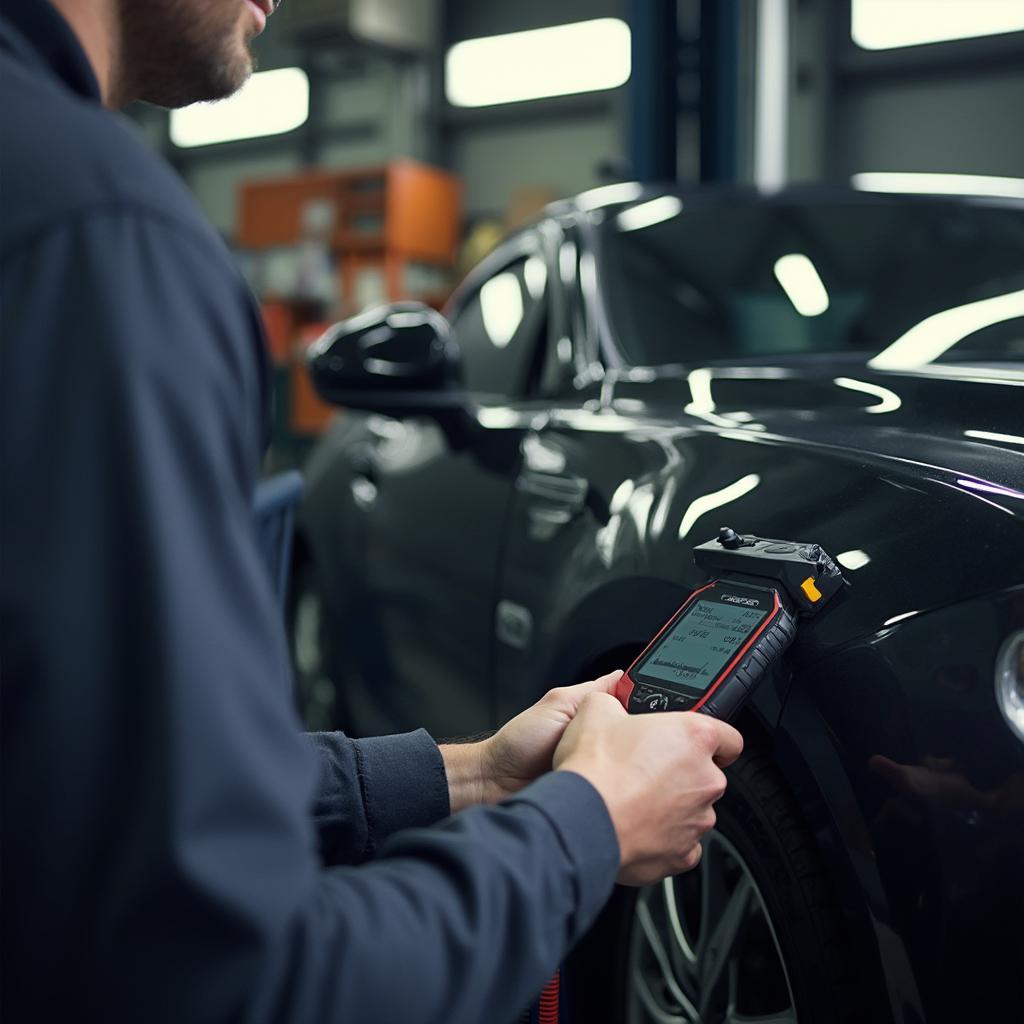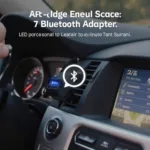Understanding your Mazda’s diagnostic trouble codes (DTCs), often referred to as the mazda obd2 code list, is crucial for maintaining its health and addressing potential issues. Whether you’re a seasoned mechanic or a car owner wanting to understand what that check engine light means, this comprehensive guide will provide you with valuable insights into Mazda OBD2 codes. Let’s dive into the world of Mazda diagnostics and empower you with the knowledge to keep your car running smoothly.
Decoding the Mazda OBD2 Code List
Mazda, like all other car manufacturers selling vehicles in the United States after 1996, uses the standardized OBD2 system. This system allows a universal OBD2 scanner to communicate with your car’s computer and retrieve diagnostic trouble codes. These codes, appearing as a combination of letters and numbers, pinpoint specific areas within your vehicle’s systems that may be malfunctioning. The mazda obd2 codes list provides a standardized framework for interpreting these codes.
What Does the Mazda OBD2 Code List Tell You?
The mazda obd2 code list categorizes codes into different groups related to various systems, including the powertrain, chassis, body, and network communication. For example, a “P” code refers to the powertrain, “B” for body, “C” for chassis, and “U” for network communication. Each code within these categories further specifies the issue. For instance, P0301 indicates a misfire in cylinder 1. Knowing these specifics helps narrow down the problem area and makes troubleshooting more efficient.
Using a Mazda OBD2 Scanner Effectively
To access the information provided by the mazda obd2 code list, you’ll need an OBD2 scanner. These range from simple code readers to advanced professional-grade scan tools. While a basic code reader will show you the code, a more advanced scanner provides additional data such as live sensor readings, which can be invaluable for in-depth diagnosis. Finding a good obd2 scanner that works with forscan can greatly enhance your diagnostic capabilities.
How to Read Codes Without an OBD2 Scanner (Limited Options)
While an OBD2 scanner is the preferred method for retrieving diagnostic codes, there are some limited ways to read codes without one. Some older Mazda models allow you to retrieve codes through a specific sequence of key turns and observing the blinking check engine light. However, this method isn’t as comprehensive as using a scanner and isn’t available on all models. It’s always recommended to use a dedicated scanner for accurate and detailed diagnostic information. For those interested in alternatives for other makes, you might find resources like how to read codes without obd2 dodge helpful.
 Mechanic Diagnosing a Mazda Using an OBD2 Scanner
Mechanic Diagnosing a Mazda Using an OBD2 Scanner
Common Mazda OBD2 Codes and Their Meanings
Certain OBD2 codes appear more frequently than others in Mazda vehicles. Understanding these common codes can be beneficial. P0420, for instance, often relates to a catalytic converter issue. Another common one is P0171, which indicates a lean air/fuel mixture. Knowing the potential causes behind these common codes can save you time and effort in diagnosis.
Where is the OBD2 Port Located in a Mazda Miata?
The OBD2 port in a Mazda Miata, like most vehicles, is typically located under the dashboard on the driver’s side, near the steering column. You might find it helpful to search for specifics related to your Miata model, such as where is the bluetooth obd2 adapter miata, especially if you are planning to use a wireless OBD2 adapter.
“Understanding the mazda obd2 code list isn’t just about fixing a problem, it’s about empowering yourself as a car owner,” says renowned automotive expert, Dr. Emily Carter, Ph.D. in Automotive Engineering. “It allows you to take control of your vehicle’s maintenance and make informed decisions.”
“Utilizing a bafx obd2 forscan can provide comprehensive diagnostic capabilities,” adds automotive diagnostics specialist, Mr. David Lee.
In conclusion, understanding the mazda obd2 code list is a vital skill for any Mazda owner or mechanic. It provides a crucial gateway to understanding your car’s health and addressing potential problems efficiently. Using the right tools and resources, you can unlock valuable insights into your vehicle’s diagnostics and keep it running smoothly.
Contact us for any assistance: WhatsApp: +1(641)206-8880, Email: [email protected] or 789 Elm Street, San Francisco, CA 94102, USA. We have 24/7 customer support.

